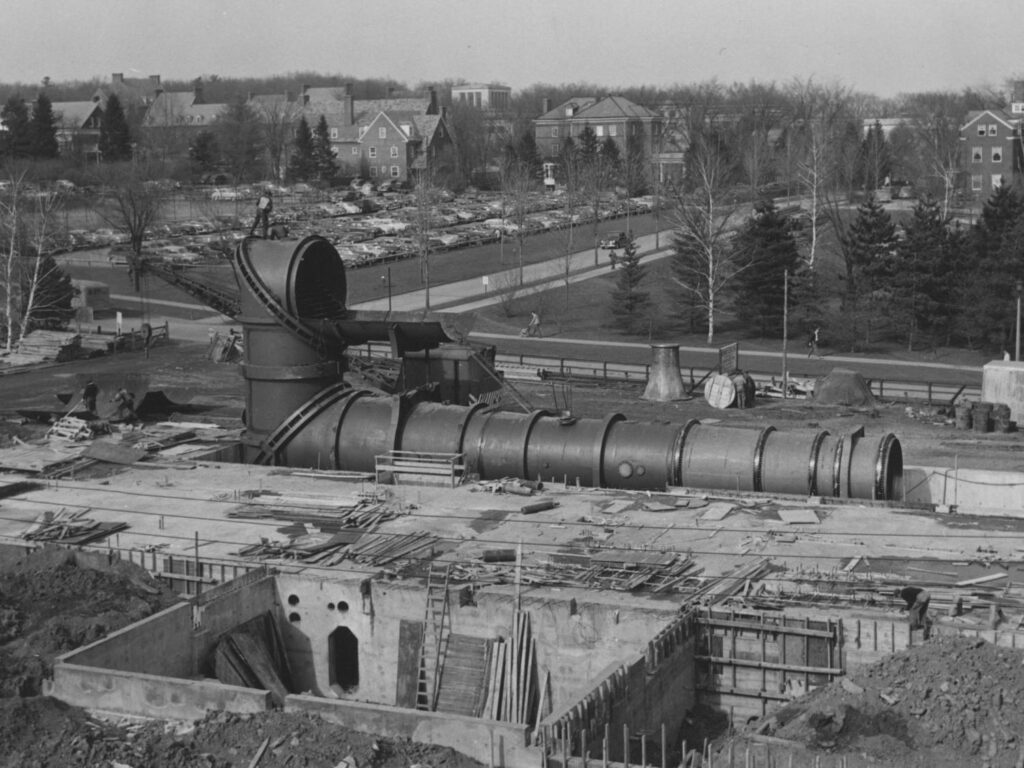The Garfield Thomas Water Tunnel is a historic engineering landmark on the Penn State campus that, for more than 70 years, has been used for research into military technology and other subjects.
The tunnel building on Atherton Street was built in 1949 and named in honor of Lt. j.g. Garfield Thomas, a 1938 Penn State alumnus, who died in fighting near the Solomon Islands during World War II. Thomas was posthumously awarded the Navy Cross and Purple Heart and is considered one of the university’s first heroes to die during the war.
The 48-inch diameter water tunnel, which for four decades was the largest in the world, was designed to support torpedo and propeller research for the Navy as part of the Ordinance Research Laboratory — the predecessor to the Applied Research Laboratory. Under the leadership of Dr. Eric Walker, the lab was established after World War II to support military research.

Most of the research conducted at the water tunnel is related to the military and therefore classified. Nonetheless, it was public knowledge that some of its most important early work dealt with noise problems of underwater propellers for torpedoes and ships, as well as various hydrodynamic properties of shapes passing through water in naval applications.
The facility has been the subject of myths. One was that the tunnel ran from Atherton Street to University Drive where the Breazeale Nuclear Reactor is located and was large enough to test full-sized nuclear submarines. In fact, the building houses the entire tunnel and only small models are used.
The tunnel is actually a 257-foot loop of tubes made of gradated sizes. Water rushes by models being tested at 60 feet per second. The blue tubes can be seen through the large windows facing Atherton Street. The tunnel was assembled first, and the building then constructed around it. The building’s designers made the windows removable so that the tunnel could be easily repaired or changed.
As a symbol of the U.S. military, the water tunnel was the site of protests by Penn State students during the Vietnam War. An underground newspaper published briefly on the campus was titled “The Garfield Thomas Water Tunnel.” It was edited by a small group of students and was like similar newspapers published on other campuses. The newspaper’s inside described the heroism of Thomas and said, “We dedicate this paper to Garf Thomas and the cause of peace for which he gave his life.”
The water tunnel remains active and allows researchers to study a variety of fluid dynamic phenomena. While military subjects have been the focus, tunnel-based research has also been applied to artificial heart valves, vacuum cleaner fans, heating and cooling systems, Space Shuttle pumps, and other products.
In 1996, the American Society of Mechanical Engineers named the water tunnel a Historic Mechanical Engineering Landmark, joining a list that includes the Apollo Command Module, San Francisco’s cable cars, and the Johnstown Inclined Plane.
The tunnel and building have been updated several times, the last in 1992. In 2022, the Penn State Board of Trustees approved a $34.3 million renovation of the building to address accessibility, code compliance, and safety concerns.
Ishaan Anavkar
Sources:
“Trustees Committee Recommends Garfield Thomas Water Tunnel Renovation Plan,” Penn State Research News, February 17, 2022.
“Garfield Thomas Water Tunnel,” American Society of Mechanical Engineers, www.asme.org/about-asme/engineering-history/landmarks/188-garfield-thomas-water-tunnel. (Accessed March 30, 2022).
Brown, Nancy Marie. “Tunnel Tour,” Penn State Research News, May 1997.
First Published: May 6, 2022
Last Modified: May 14, 2025
